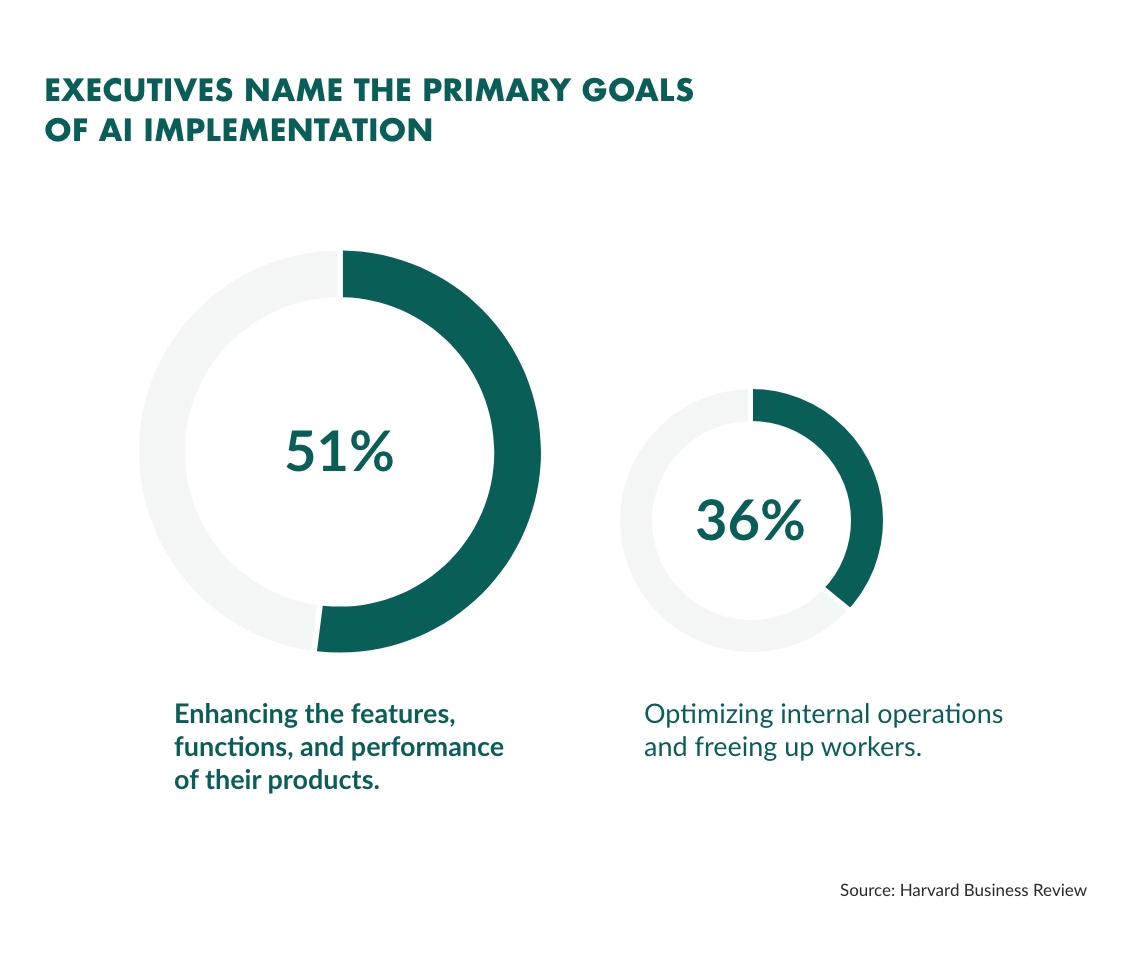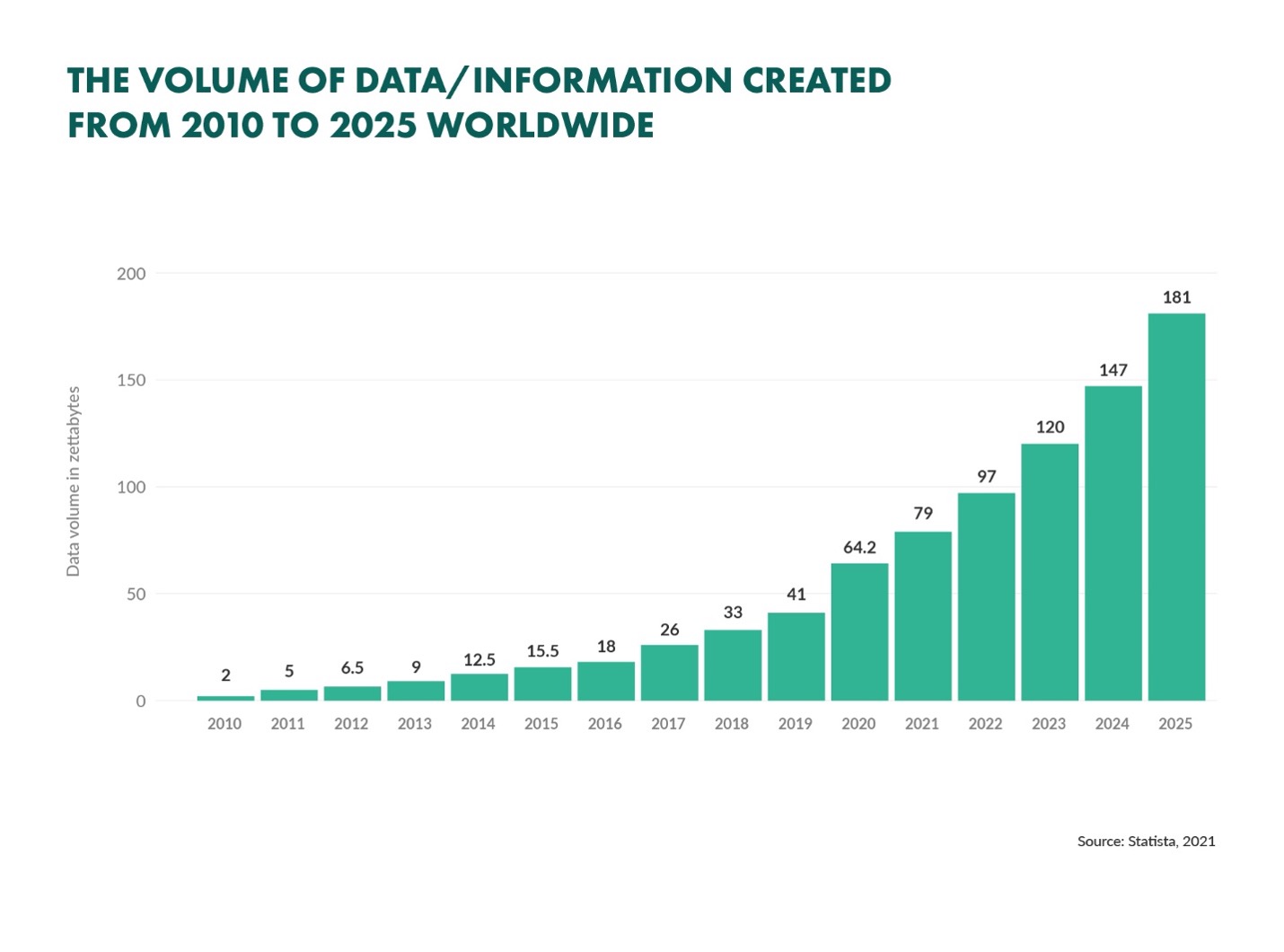Artificial Intelligence (AI) is everywhere today.
Whether in personalized recommendations on your favourite online shopping or streaming platform, turn-by-turn directions from your car, or interactions with your favourite smart assistant, AI is increasingly a part of everyday life.
Globally, the AI market will reach nearly $200 billion by 2025.
And the CRM industry is not an exception when it comes to embracing AI technologies.
Nowadays, AI is frequently applied in CRM applications. From marketing teams to support staff, AI is helping companies better fill their sales pipelines and maintain relationships with their customers. If your CRM system is not currently using AI, you are potentially missing out on tremendous opportunities to improve your customer experience.
The marriage between AI and CRM is also a lucrative one. This year, AI in CRM is set to generate over $1.1 TRILLION in revenues!
In this article we debunk a few common myths about AI and take a look at how AI can enhance customer relations and simplify your everyday work.
What is AI?
Simply put, AI is a tool that helps people do their jobs faster, more efficiently and more effectively.
AI uses computer systems' inherent speed and processing advantages to perform tasks typically associated with human intelligence. Examples include pattern identification, complex problem-solving, and performance improvement through learning.
The terms “AI” and “machine learning” frequently appear together and are used interchangeably. But machine learning and artificial intelligence are not the same thing.
- AI is a broader discipline that attempts to replicate human analytical and decision-making processes in machines.
- Machine learning is a procedural subset of AI that deals with adaptive training to improve data analytics and machine decision-making.
Why are some people afraid of AI?
Despite AI's well-established benefits, many people and businesses continue to have reservations about its use due largely to a misunderstanding of AI and its abilities.
Fear #1 – Replacement of humans
Because of its portrayal in popular media, the notion of AI still conjures up images of Skynet taking over the world. Even those who have more realistic expectations about AI often fear that the end goal of AI is the replacement of human workers.
Let’s get it straight: these fears are far overblown!
Properly implemented, AI is an aid to human productivity rather than a replacement for a human employee. And because AI does not truly operate on its own, AI creates jobs for data scientists and programmers.
Will AI continue to evolve more and better capabilities? Yes, but that is a good thing! And it will only happen with substantial involvement and oversight by human programmers and computer professionals.

Fear #2 – Complexity of implementation
Another common concern about AI in modern business applications is that it is too complex for everyday users.
The belief is that AI requires building intricate mathematical models and then complex programming them. But for many applications, AI operates in the background, often without users even knowing it is there.
Even when it comes to programming AI applications, there are more simple solutions than hiring a large coding team to work around the clock.
In general, the fear of having not enough talent and dedicated specialists commonly prevails when companies consider AI technologies.

One solution is upskilling existing workers. Many companies are now filling high-tech talent gaps by providing workers with additional training. Opportunities to build skills through programs like online coding tutorials that bolster internal technical expertise while increasing employee loyalty with more exciting work and better advancement opportunities.
Fear #3 – Input bias
Yet, there are legitimate concerns about AI.
One significant issue is that injected bias can skew its results. A recent Gartner report suggests that by 2022, data bias will provide at least some erroneous results in 85% of all AI projects.
What exactly is bias in AI? The primary biases are data bias and algorithmic bias:
- Data bias is building a set of input data that fails to reflect accurately the population you are analysing.
- Algorithmic bias (i.e. bias built into the analytical model) is also a concern because poor algorithms can worsen input data biases.
English please? Let’s use an example.
Facial recognition programs are famous for their input bias problems. Originally these programs were built using predominantly the faces of white, European-origin men. As a result the programs frequently misidentified people of colour and women of colour, in particular.
Often input data bias results from inherent biases (e.g., racial and sexual prejudices) of the employees building the AI routines. While bias insertion can be intentional, unintentional bias is far more likely to impact AI implementations negatively.
So, how can you minimize both input and algorithmic bias and achieve more accurate results? The answer is in having more diverse teams working on your AI implementations.
How AI can improve general work productivity
Modern society thrives on ever-increasing amounts of data – far more data than the average person can digest.
Did you know that more than 2.5 quintillion bytes of data are being created every day, and by 2025 there will be 175 zettabytes (1 zettabyte has 21 zeros) of data in the global datasphere?

AI can turn those enormous data collections into meaningful information, allowing workers to simplify their workload and gather more insights from the data at their fingertips.
Making business processes faster
Speed is crucial in most business decisions. So, the faster you can gain insight from your data, the better able you will be to make high-impact decisions.
Automated AI tools far exceed human capabilities when it comes to speed. For sure, your employees could use less automated methods – SQL queries, for example – to parse company data. But the human element reduces both analytical speed and accuracy. Meanwhile, AI models consistently apply the same criteria to all data, avoiding potential analytical errors.
Automated AI tools can also facilitate communication between your employees and your customers. This means you can significantly improve the overall customer experience by simply offering quicker responses to your customers!
Aggregating multiple data sources
The data that businesses use every day comes from various sources – devices, applications, databases, etc. – and often in many different formats. So, it can be quite difficult to identify the most useful information across these sources. Luckily, this is what AI excels in: dealing with disparate datasets.
Improving data quality
Which is better: more data or less data?
Honestly, this is the wrong question. What most applications actually need is better quality data.
Even AI tools can struggle when faced with large amounts of irrelevant data. Indeed, 65% of executives of companies worldwide feel that their AI investments to date have not generated sufficient value for the company. But, in large part, this has been due to poor data quality.
What these companies are missing is AI's ability to pre-process input data. Well-built AI models can scan input data for quality issues and segregate irrelevant or problematic data. By then focusing only on the most relevant data, the models can provide the best possible analytical output.
Identifying compliance concerns
Today, global news are full of stories that involve data privacy breaches. And, the current data privacy laws (e.g., HIPAA, GDPR, PDI-DSS, etc.) have garnered widespread attention because of the recent scandals.
You can also train AI tools to recognize potential compliance issues with input data.
Identifying data that may have privacy implications is rarely as simple as looking for a field called “social security number.” AI tools can quickly analyse your data, highlighting data that needs separate protections, and thus facilitating compliance and saving your business from hefty fines or (worst) court cases.
Most data privacy laws also contain data protection requirements, so businesses must use the best possible tools to prevent cybercriminals from accessing sensitive personal data. With its ability to scan massive amounts of data (e.g., network traffic) for even minimal patterns (e.g., anomalous activity), AI creates more robust protection for all of your data, including data covered by privacy restrictions.
Why AI is simpler than you thought
Time to debunk the next most widespread myth about AI – you need to be super tech-savvy to use it.
Contrary to expectations, using AI does not always require coding knowledge.
Whether you are aware of it or not, modern AI tools already exist in the background of many existing applications, such as email filters (e.g., spam filters, smart folders), financial analysis and reporting, voice recognition, image recognition and more.
When choosing applications for your business, you should look at whether they effectively apply AI to improve system’s performance and your workflows.
Even when building AI applications and analyses internally, the process need not be overly complex. Some tools allow users to create AI analytical algorithms without knowing anything about coding. Drag-and-drop tools for building analyses and the associated reporting structures make AI implementation simple, even for novices.
AI tools also give your employees more natural ways to build actionable insights from your company data. So, rather than writing queries using unfamiliar languages, your employees can have a conversation with their data sources through AI-enhanced natural language processing (NLP).
5 ways AI-enhanced CRM can improve your performance
One of the most critical applications for many businesses is their CRM system – the hub of all customer communications.
As it records the entire customer lifecycle, from lead generation to initial contact through post-sales contacts, a CRM system affects every aspect of your business – marketing, sales, customer support, supply chain, and more.
Here are a few ways AI can improve your CRM.
1. Build better customer profiles
Because of its outstanding pattern recognition capabilities, AI-enhanced CRM systems can turn data on potential and existing customers into ideal customer profiles. You can then view each new lead or contact in the context of your customer profile. This allows you to better focus your marketing efforts and invest in the leads that are most likely to generate sales.

2. Provide more rapid responses to inquiries
It’s paramount to offer speedy responses to customer inquiries. Potential customers will not wait long before moving on. AI-enhanced CRM systems give you several ways to automate and speed your customer communications.
First, AI NLP tools can help you properly categorize incoming requests and get them to the right people for a response. When tied with your CRM system, these tools can also help you prioritize requests based on your customer profiles and communication histories.
AI tools also help provide rapid automated responses to inquiries without involving an actual employee. Giving a customer a quick response, even if it is to provide information that requires in-person follow-up conversations with an employee, creates a special touch and tells the customer that their questions are important and being addressed.
3. Interact with a wider range of customers
In today’s globalized business world, language barriers can hinder customer acquisition and retention. Even locally-focused companies frequently meet customers whose native language is different from their own. AI-enhanced communication tools in CRM systems simplify communication across language barriers without the intervention of a multilingual employee.
4. Understanding customer requests better
When you receive a customer request, you need to understand how urgent it is and its severity. AI-enhanced CRM systems can analyse the request and generate a sentiment score rating – your customer's overall state of mind. You can then apply your internal processes to prioritize the request and assign it to the proper support queue.
5. Chatbot for 24/7 customer support
Today's customers demand around-the-clock service, no matter what time zone they are in. Lengthy response times can quickly damage a customer relationship.
Unfortunately, the truth is that many businesses, small and medium in particular, simply do not have the resources to man the phones, email or other support channels 24/7.
AI-based chatbots can give your business a constant support presence, even when your employees are not available. They can often competently address customer concerns or questions. And when they cannot, you have shown the customer a timely initial attempt to solve their issues. You can then follow up with a personal interaction during regular business hours. The chain of communication is not interrupted, and you provide the customer with a better overall experience.
AI – an ally, not a foe
AI use is rapidly accelerating, and for good reason.
It amplifies the capabilities of current business systems and makes everyday business processes and workflows faster and more efficient. And when coupled with your CRM system, it builds better customer relationships and sales pipelines.
So, rather than viewing AI as a complex coding exercise, or worse yet, as an enemy out to steal jobs, businesses should look at AI as the friend and ally it can and should be!
SuperOffice CRM is now also powered with the new AI functionality. Embedded into the system and simplified to help everyone, SuperOffice AI will help you make better sense of data, automate work processes to save time and reduce manual work. And the best thing – you don’t need to have extensive knowledge of AI and coding to start using it!
If you want to learn more about the AI functionality in SuperOffice CRM, we are happy to help.
